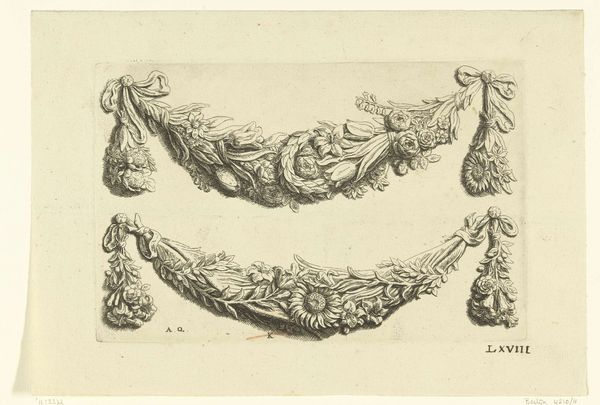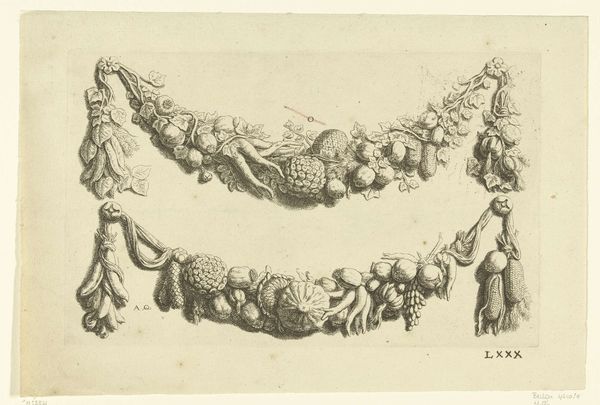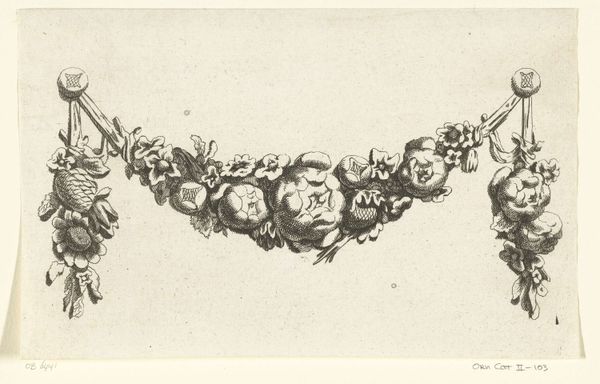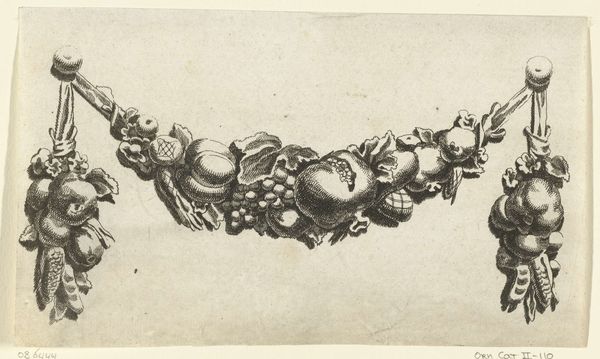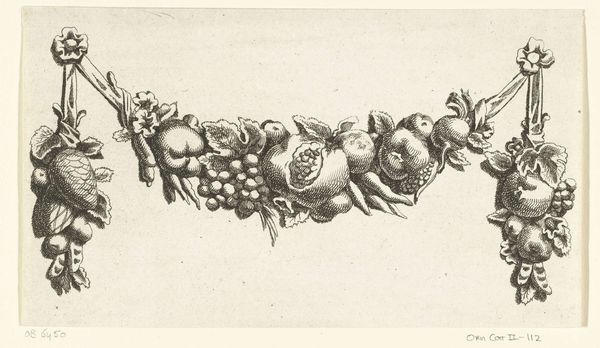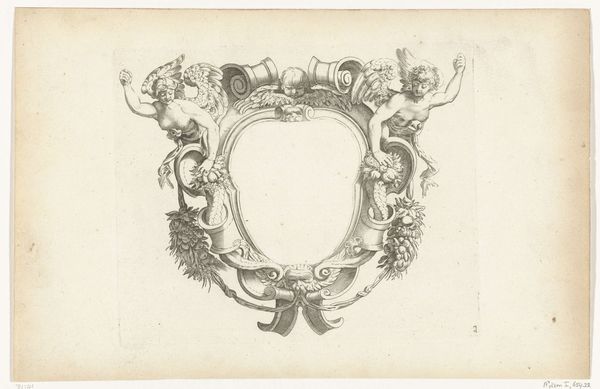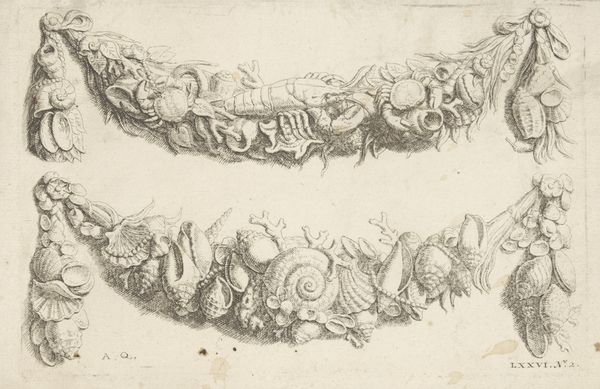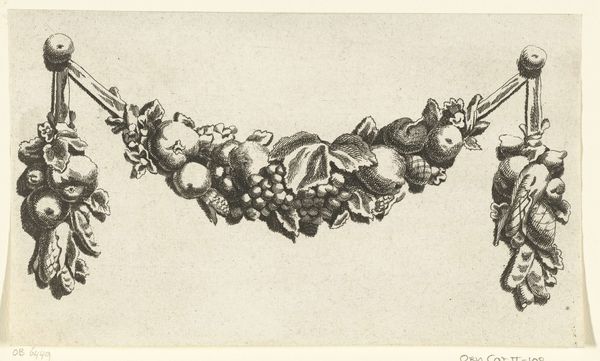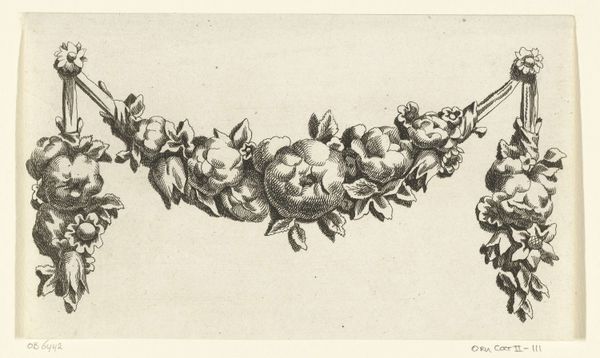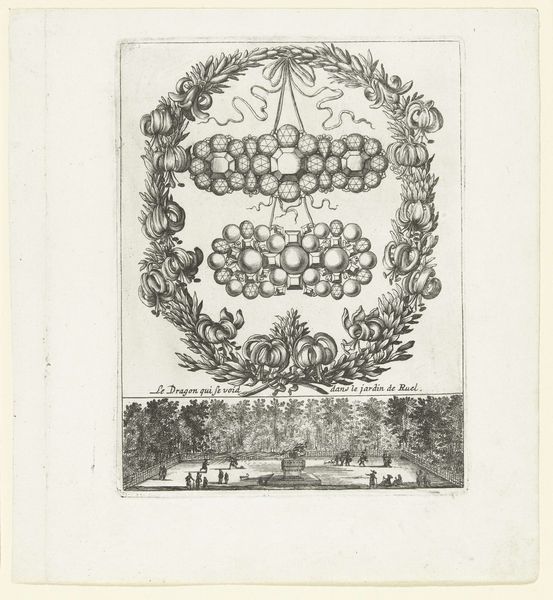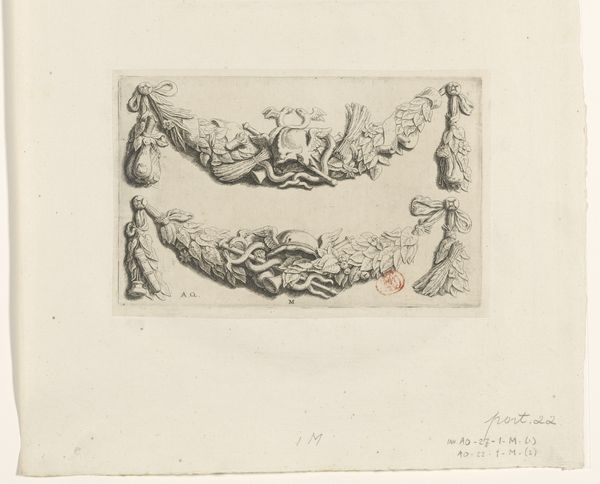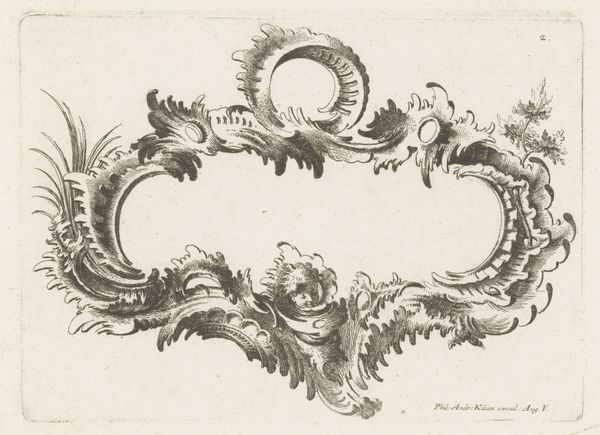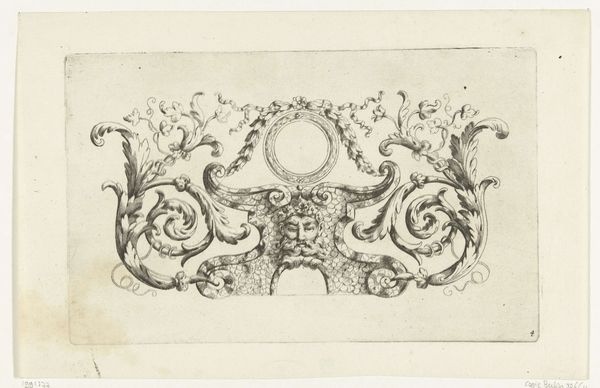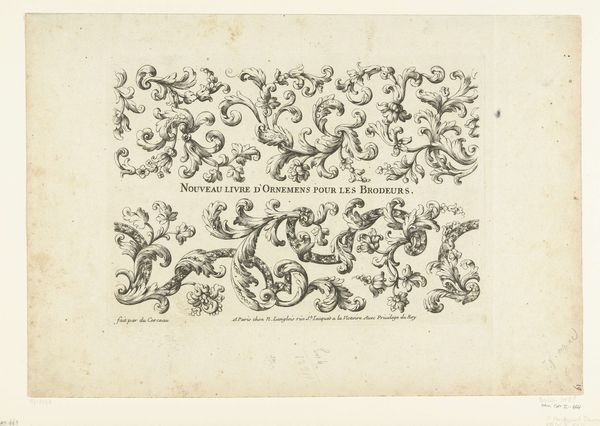
print, etching
#
baroque
# print
#
etching
#
etching
Dimensions: height 139 mm, width 213 mm
Copyright: Rijks Museum: Open Domain
Hubert Quellinus created these two festoons of leaves and fruit using etching, a printmaking technique dependent on acid. The crisp lines and delicate shading give the impression of three-dimensionality, almost as if the garlands are bursting forth from the paper. Etching involves coating a metal plate with a waxy, acid-resistant substance called a ground. The artist then scratches an image into the ground, exposing the metal. When the plate is immersed in acid, the exposed lines are "bitten," creating grooves. The deeper the bite, the darker the line will appear in the print. Ink is then applied to the plate, filling the etched lines. The surface is wiped clean, and the image is transferred to paper under high pressure. The precision and detail achieved through etching allowed for mass production, making art more accessible. Yet, it also depended on skilled labor, from the preparation of the plate to the careful inking and printing process. The result is a design born of both artistry and industry.
Comments
No comments
Be the first to comment and join the conversation on the ultimate creative platform.
